#and then 2. MOZAMBIQUE
Text
youtube
Os Impacto - That's What I Want
#os impacto#that's what i want#garage rock#protopunk#protoprog#hammond organ#mozambique#vv. aa. - cazumbi: african sixties garage vol. 2#2009#Youtube
6 notes
·
View notes
Text
ik this is known but no successful settler colony has reached relative "internal stability" without genocide. north america is the first example of this that comes to mind: during the early years all up to the 19th cent., wars and attacks between native americans and settlers were frequent. and yes, while the settler armies were more well armed and more powerful, the native americans were a great force against the european invasions and did cause casualties among white populations, "including civillians", and halted expansion and development for many of the colonies.
this was met in 2 ways:
federal programs sponsored by the colonial states (violent deculturation, seperation from families through residential & boarding schools, expulsion from ancestral lands and destruction of the indigenous identity)
and unofficial, "individual" settler and enlistee actions of massacres upon indigenous populations. these events obviously were never prosecuted because they worked in tandem with the colonial powers, supported and encouraged by them.
the extermination of the american indigenous people wasn't just a facet of american success but the foundation of it. if they weren't subject to the genocide, the wealth and vast land in north america wouldn't have reached the white populations and the continent would be unrecognizable today, with canada and the united states not slightly as globally influencial as they are today. imagine a usa reliant on tourism.
and ik this is all elementary level information, but israel mirrors this entire process in eery similarity, with ancient, ancestral lands seized from palestenians exploited and destroyed for capital gains following violent expulsions (the nakba created israel). palestinians remaining within the israeli border endure lynchings and attacks by settlers as well as repression and persecution under federal law. israel was founded on the same colonialist principles that america and other european settler colonies (algeria, mozambique, kenya) were: their survival just depended on how far they would go to destroy the indigenous population.
what im dreading is that israel is on course to go further and proceed with that destruction. we are currently is a uniquely horrifying moment: 2,600 dead palestenians and 6,000 in hospitals with 0 supplies and 0 power - and the ground assault following the impossible evacuations is looming. the massacres about to sweep palestinian lands with the gifting of the ten thousand rifles to settlers. the unprovoked, unwarned and constant airstrikes. the monolithic, hysteric nature of mainstream western media. the army's sentiment of hunting animals. the global unrepentant backing. the repeated promise of complete victory.
what would complete victory mean? you cannot quell palestenian resistance without exterminating palestine. the palestenian people are a tortured people, hungry, radicalized simply from their day to day life: not one gazan hasn't watched corpses being pulled from the rubble, not one gazan doesn't have murdered family, not one gazan doesn't have something to mourn. their friends and family disappear or lose limbs on the daily now, building on grief from the previous 7 decades deep destruction. the homesickness is constant. the sounds of explosions is never far. of course there would be resistance movements, of course there would be revenge attacks, of course it will be bloody, because no humans in the world could silently endure these conditions. if hamas was entirely destroyed tomorrow, the next generation of palestinian youths would simply form another. for a complete, permanent victory, you would need to raze palestine.
this is why i balk at people hoping for coexistence. coexistence goes against the very founding strategy of israel. it goes against every principle and long term plan israel has for itself. israelis themselves do not want coexistence, they want gaza flattened and the west bank annexed, they want palestine destroyed and the palestenian people extinct. any sympathy with israel is a transgression on humanity.
#palestine#gaza#anti zionisim#this is a very base level knowledge of native american history by the way im sorry
3K notes
·
View notes
Link
# x2#2# x18#2 x18 x2turningblanks#Amazique#Amazoué#BlackHyedua#CaliforniaExoticHardwoods#Exotic#exotichardwoods#hardwoods#Hyedua#kilndried#Mozambique#Ovangkol#Ovangkol2x2x18#Ovangkol2x2x18turningblanks#Ovangkolfigured#Ovangkolturningblanks#Shedua#turningblanks
0 notes
Text
Moth Of The Day #260
Pikachu Moth
Mazuca strigidincta
From the noctuidae family. They can be found from Nigeria and Ghana down to northern Namibia and Mozambique.


Image sources: [1] [2]
#moth#moths#lepidopterology#lepidoptera#nature#pretty moth#bugs#insect#moth of the day#motd#lepidoptery#entomology#insects#bugblr#invertebrates#bug#beautiful moth#interesting moth#pikachu moth#mazuca strigicincta#african moth#noctuidae#noctuidae moth
637 notes
·
View notes
Note
Ayoo im 100% sure Krueger takes trophies so pls share more of ur opinion on that:3
I just think Krueger likes taking "souvenirs" from operations in general, but specifically stuff that belongs to targets that he personally killed.
One of my headcanons is that Krueger has 2 golden varnish desert eagles that he took from a local gang boss on his way from Mozambique to Eastern Europe. I've drawn him with it/them a few times!




And this screenshot from a killcam of me - yes, it's my screenshot and it's me in it - also features it. I'm serious about this gun.

#the golden deagle is reoccurring in cod as an easter egg in the campaigns also#and it's always been my favourite handgun to play in mp#krueger#krueger hcs#ask#headcanons#cod krueger
141 notes
·
View notes
Note
(To wit: this is why I have a problem with the people who want to dismantle Israel with no plan or regard for Israeli and/or Jewish safety.)
After Mozambique and Angola's independence, the Portuguese were not kicked out contrary to popular belief. Most chose to leave on their own (so-called "returnados"), while the others who chose to stay were allowed (especially those who supported independence + joined MLPA/FRELIMO and opposed colonialism) as long as they did not own weapons and supported the government. While the situation was more complex, in South Africa while whites still hold most financial power, after Apartheid many white decided to leave on their own.
In regards to your previous point on the UNRWA post, I don't see why Jewish citizens couldn't stay as long as they supported the new government and stood against colonialism and ethnic cleasing.
If you don't see the problem, you are not educated enough about this topic to weigh in. Please talk to even one (1) Mizrahi Israeli Jew about how they/their family came to be in Israel. Then consider (1) reading what the existing political entities in the Palestinian territories have to say about Jews, and (2) stop comparing this situation to historical cases of post-colonialism and start comparing it to historical cases of Arab/Muslim majority countries with Jewish citizens. Then consider how Jews the world over have fared under the rule of foreign powers, without self-determination, for the last 2000 years: (this post is a great place to start; read ALL of it + I will know if you skim)
Anyway, until you can explain to me correctly what the Farhud was and what happened to the 1000+ year old Jewish communities across the Middle East that no longer exist, as well as demonstrate a real understanding of what dhimmi status was and meant at a practical level for Jews, I am unwilling to continue this conversation.
373 notes
·
View notes
Text

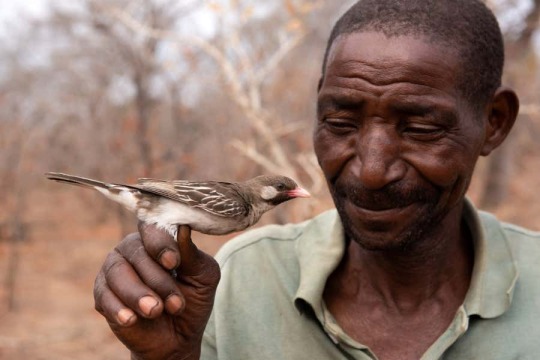
[photo 1: A Greater Honeyguide feeds on honeycomb in South Africa. Photo: Nigel J. Dennis/Gallo Images/Corbis. From Audubon.]
[photo 2: A Yao honey-hunter in Mozambique holds a honeyguide bird. Photo: Claire Spottiswoode/University of Cape Town. From New Scientist.]
from New Scientist magazine:
Honeyguide birds respond to special calls from human honey-hunters
Excerpt: "People from multiple cultures in Africa have unique sounds [my note: later described in the text as "bird-like whistles" of the Hadza honey-hunters, and "trill-grunts" of the Yao honey-hunters] that they use to communicate with honeyguide birds, and the birds recognise these signals as an invitation to cooperate.
"Greater honeyguides (Indicator indicator) lead humans to bees’ nests so that honey-hunters will break them open. While the humans collect the honey, the birds feast on beeswax and larvae."
The full research article, written by Claire Spottiswoode and Brian Wood, Culturally determined interspecies communication between humans and honeyguides, was published in Volume 382, Issue 6675 of Science.
[By the way, the Honeyguide has a fantastic taxonomic name: "Indicator indicator."]
#birds#birdblr#birblr#african birds#honeyguide#honey-hunting#indicator indicator#scientific research#bird research#ornithology
107 notes
·
View notes
Note
Hello! I saw you have an inbox for arthropod suggestions so here's mine: Typhochlaena seladonia.

Top left:
"Brazilian jewel tarantula (Typhochlaena seladonia) is a species of aviculariine tarantula. They are found in Bahia and Sergipe, Brazil in rainforest parts. It is unique as an arboreal spider that constructs trapdoors in the bark of trees. Doesn't really like human contact much. They are generally more docile, although some individuals are particularly defensive."
Top middle:
"Purple pink toe or purple tree tarantula (Avicularia purpurea) are mainly present in Ecuador in the Amazon Region. This species can be found in very different habitats, but frequently it is present in agricultural areas, especially in the field of grazing cattle. Sometimes it can be found in holes of walls of buildings or in the spaces below the roofs. They builds their nests primarily in hollows in the trees, sometimes in the vicinity of epiphytic plants. They eat mostly crickets, cockroaches, meal worms, waxworms and darkling beetles, but they also can catch small rodents."
Top right:
"Trinidad dwarf tiger (Cyriocosmus elegans) is a New World Terrestrial Tarantula that comes from the tropical climates of Trinidad, Tobago and Venezuela. They are venomous. Also, due to being a such a small tarantula, females have an average lifespan of around 7 years while males tend to only live about 2 years."
Down left:
Golden Brown Baboon Spider "Augacephalus breyeri is a species of harpactirine theraphosid spider, found in South Africa, Mozambique and Eswatini. They live in a hole that takes it between five to seven years to construct. They feed on a variety of small invertebrates such as beetles, grasshoppers, millipedes, cockroaches, crickets, and other spiders!"
Down right:
"Gooty Sapphire Ornamental Tarantula (Poecilotheria metallica) also known as the peacock tarantula, is an Old World species of tarantula. This is the only blue species of the genus Poecilotheria. Like others in its genus it exhibits an intricate fractal-like pattern on the abdomen. The species' natural habitat is deciduous forest in Andhra Pradesh, in central southern India. They live in holes of tall trees where it makes asymmetric funnel webs. The primary prey consists of various flying insects."
Here's some more tarantula for you guys! Also from now on every species I make will have short description about em. Thank you for suggestion!
30 notes
·
View notes
Text

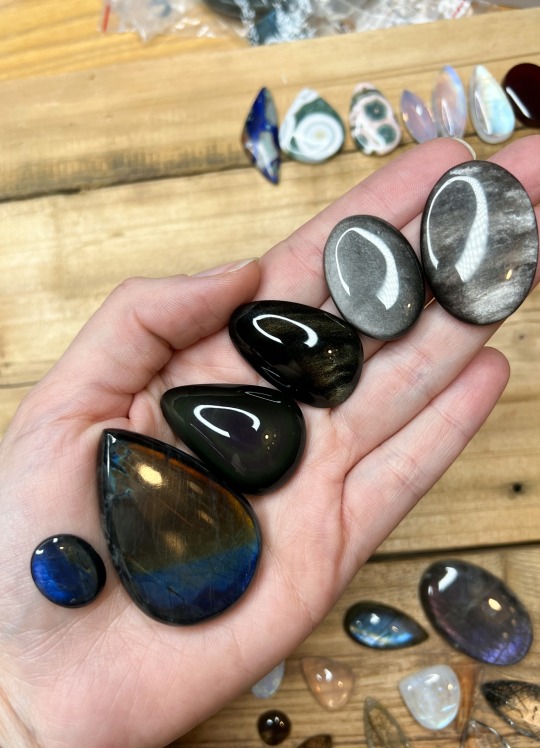



Custom Wire Wrapped Necklaces
These are the stones I have available for wire wraps, for those of you who are interested!
If you would like to claim one, please be sure to read this entire post!
So here’s the rundown. Below is a picture with each stone numbered, and below that is the name of each stone, along with the price.
The price includes the following: the stone wrapped in the metal of your choice (sterling silver, 14k gold fill, 14k rose gold fill), an 18″ chain finished with a handmade clasp, and it includes free shipping worldwide!
You will choose the style they’d like it wrapped in. There are three example pics below.
Payment is due when the stone is claimed and all the options are chosen (metal, style, etc). PLEASE NOTE - these will be completed in late May 2023. I will aim to have them done before the end of that month. They take a long time to make, please make sure you’re okay with the wait before ordering. I put the utmost care into this and have extreme attention to detail, and when that combines with my busy schedule, it means that it can take a while. I always aim to get them done early, but sometimes it’s not possible. If you are buying one for a certain event or deadline please be sure to let me know when ordering, so I can let you know if it's possible for it to be completed before then!
To claim: send me a message over the instant messenger with your email address, the country you’re in, the stone you’d like to claim, the metal you’d like it wrapped in, and the style you’d like it wrapped in. I’ll then send your invoice and get started on your pendant! :)
*Note* These are some of my best, highest quality stones! I’ve been collecting (and hoarding, if I’m honest) hundreds of top-quality stones for 10 years to build this collection I can share with you.
Here are all the stones:
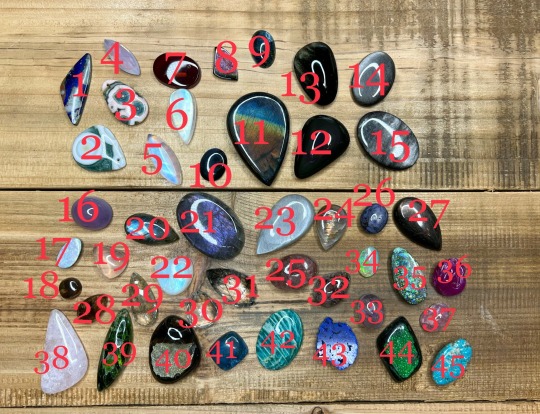
Brecciated Azurite - $140
High-Grade Old Stock Ocean Jasper - $140
High-Grade Old Stock Ocean Jasper - $140
Lavender Quartz Facet - $155
Highest Grade Rainbow Moonstone - $180
Highest Grade Rainbow Moonstone - $175
Deep Red Garnet - $145
Watermelon Tourmaline - $145
Blue Apatite - $135
Genuine Spectrolite from Finland - $150
XXL Genuine Spectrolite from Finland - $325
Rainbow Obsidian - $135
Gold Sheen Obsidian - $120
Silver Sheen Obsidian - $115
Silver Sheen Obsidian - $120
Lavender Chalcedony - $135
Australian Crystal Opal Triplet - $125
Fire Agate - $125
Mozambique Rose Quartz - $120
Blue Labradorite - $125
Rare Purple Labradorite $145
Rainbow Moonstone - $130
True Silver Moonstone - $140
Lattice Sunstone - $140
Confetti Sunstone - $135
Star Ruby - $140
Chatoyant Sapphire - $160
Red Rutilated Quartz Facet - $135
Epidote Included Quartz Facet - $140
Clear Quartz Facet - $115
Black Tourmaline & Epidote Included Quartz Facet - $185
Harlequin Quartz - $160
Phantom Amethyst w/ Inclusions - $150
Ethiopian Opal - $155
Rare Genuine Andamooka Opal from Australia (15.8 carats) - $435
Vietnamese Ruby Gourd Carving (22.75 carats) - $425
Cat's Eye Pink California Tourmaline (San Diego co.) (12.3 carats) - $230
Morganite from Russia - $170
Chrome Diopside from Russia - $180
Pyritized Ammonite Fossil from Russia - $180
Dianite (Russian Blue Jade) - $160
Amazonite from Russia - $120
"Blueberry" Azurite Geode from Russia - $140
Uvarovite Garnet from Russia - $185
Mongolian Turquoise - $140
These are the styles you can choose from (I do very minimalist wrapping so the stone really shines through! And the wrapping is super sturdy!)
Style #1 (prongs):
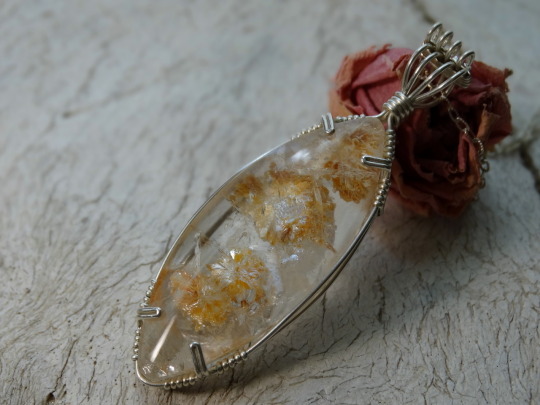
Style #2 (symmetrical):

Style #3 (asymmetrical):
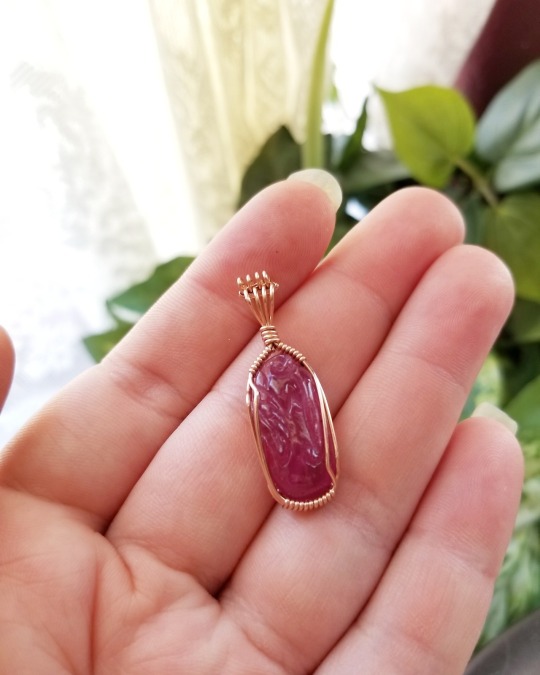
I will cross out each stone as they are claimed!
Extra little note: I have some square wire if you prefer that to the round, just let me know!
Thanks, everyone :)
302 notes
·
View notes
Text
Butterfly #50: Light Webbed Ringlet (Physcaeneura pione)



Image credits: 1 + 2, 3
Info source: 1
This butterfly can be found in Democratic Republic of Congo (Katanga Province), north-eastern and western Tanzania, Malawi, northern Zambia, Mozambique and eastern Zimbabwe.
23 notes
·
View notes
Text
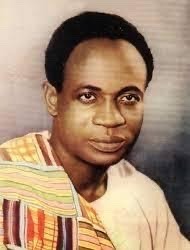

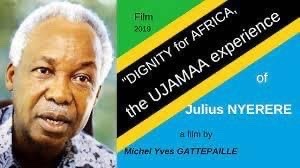




One day in the future, there will be a place named the United States of Africa Federation. It will be a vast territory comprised of many countries. The leaders will convene and decide to unite the region to make it stronger, thus creating a federation.
In the United States of Africa Federation, there will be one prominent leader known as the President. The President will be the leader who will make all the significant decisions. However, the President will not be a dictator. The President will be elected by all the people within the United States of Africa Federation.
They will also have a single currency for all the countries - no more kwachas, nairas, or rand - just one significant currency called the Afri-dollar, making trading and other activities easier. Additionally, they will have one massive army known as the African Defence Force to protect the entire federation from bad actors and keep everyone safe.
The United States of Africa Federation will not be perfect. There will be complex issues to address. The Federation will have to figure out how to share resources and help all the people in need.
Overall, people will work together to create a better future for Africa. They will make Africa strong and proud. It will be a place where everyone will be equal and will respect one another.
This concludes the story of the United States of Africa Federation, prophesied by African revolutionaries who have advocated for the unity of Africa:
1. Kwame Nkrumah (Ghana): Nkrumah was a key figure in the Pan-African movement and played a crucial role in Ghana's independence from British colonial rule. He strongly advocated for African unity and was instrumental in the formation of the Organization of African Unity (OAU), now known as the African Union (AU).
2. Patrice Lumumba (Democratic Republic of Congo): Lumumba was an influential leader in the struggle for Congo's independence from Belgium. He envisioned a united Africa free from colonialism and exploitation. Unfortunately, his leadership was cut short by his assassination in 1961.
3. Julius Nyerere (Tanzania): Nyerere was the first president of Tanzania and a prominent advocate for African unity. He believed in socialism and played a crucial role in the formation of the OAU. Nyerere actively supported liberation movements across Africa and worked towards economic and political integration.
4. Amílcar Cabral (Guinea-Bissau and Cape Verde): Cabral was a revolutionary leader and the founder of the African Party for the Independence of Guinea and Cape Verde (PAIGC). He fought against Portuguese colonial rule and championed the idea of a united Africa. Cabral's ideas on liberation and African unity continue to inspire many.
5. Thomas Sankara (Burkina Faso): Sankara, often referred to as "Africa's Che Guevara," was the president of Burkina Faso. He advocated for self-reliance, social justice, and pan-Africanism. Sankara pushed for economic independence and called for African countries to break free from the shackles of neocolonialism.
6. Samora Machel (Mozambique): Machel was the first president of an independent Mozambique. He was a staunch supporter of African liberation movements and a vocal advocate for African unity. Machel emphasized the importance of self-determination and worked towards regional integration in Southern Africa.
7. Jomo Kenyatta (Kenya): Kenyatta played a crucial role in Kenya's struggle for independence and became the country's first president. While focusing on building a strong and independent Kenya, he also emphasized the importance of African unity and cooperation.
#blacktumblr#black history#black liberation#african history#united states of africa federation#pan africanism
92 notes
·
View notes
Text
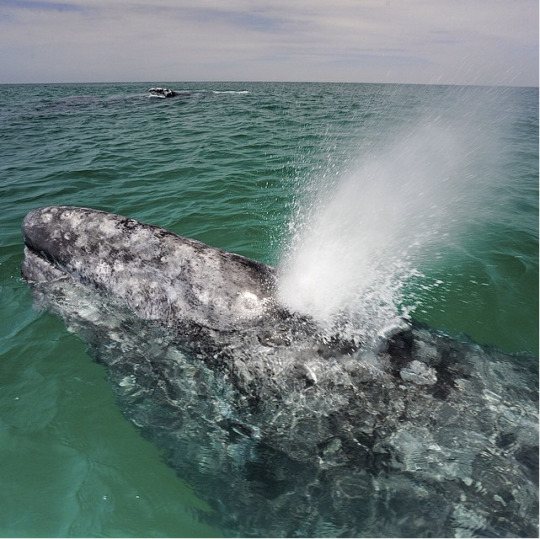
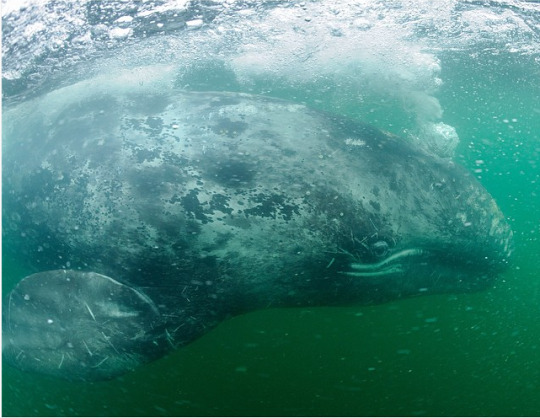

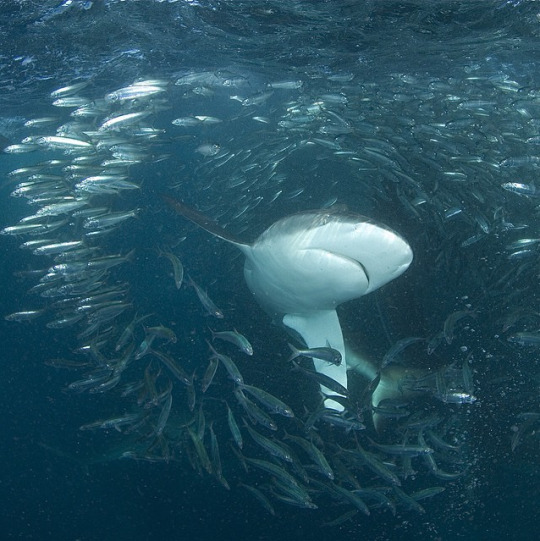
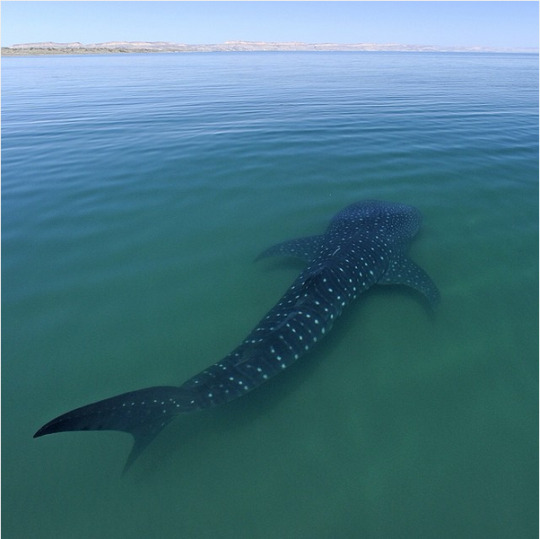

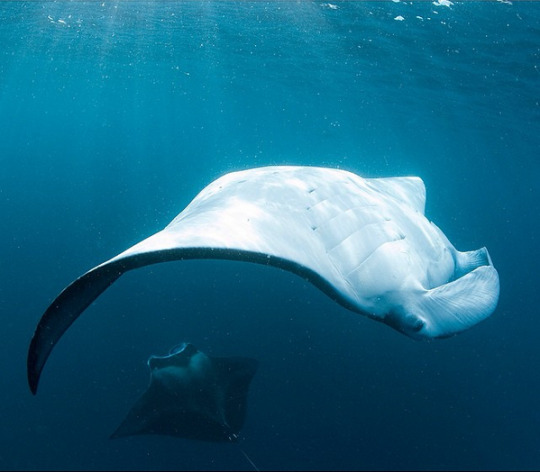
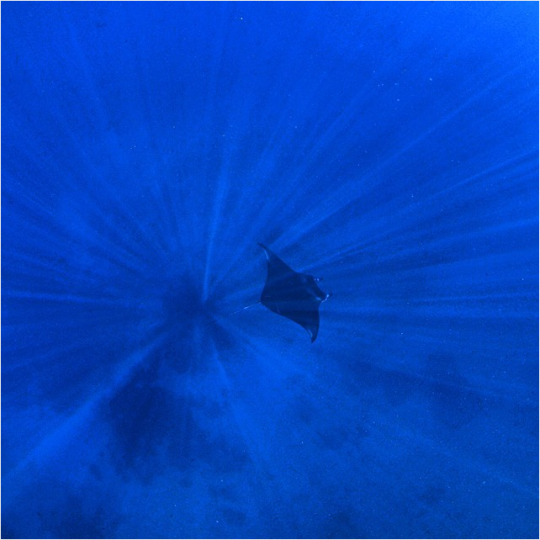

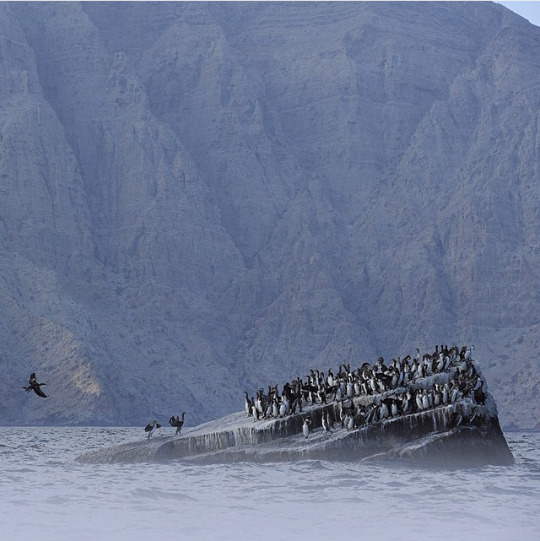
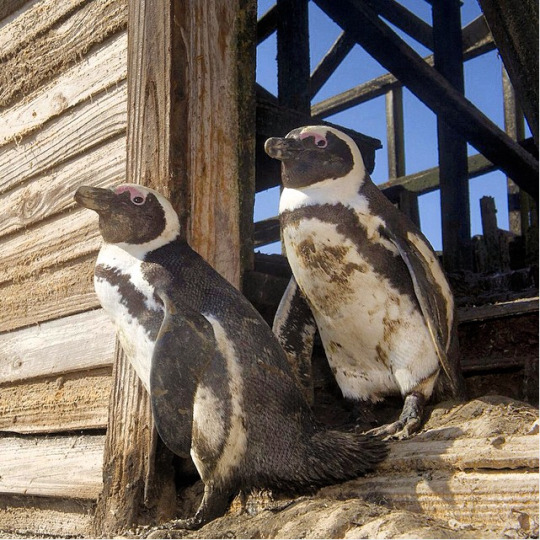


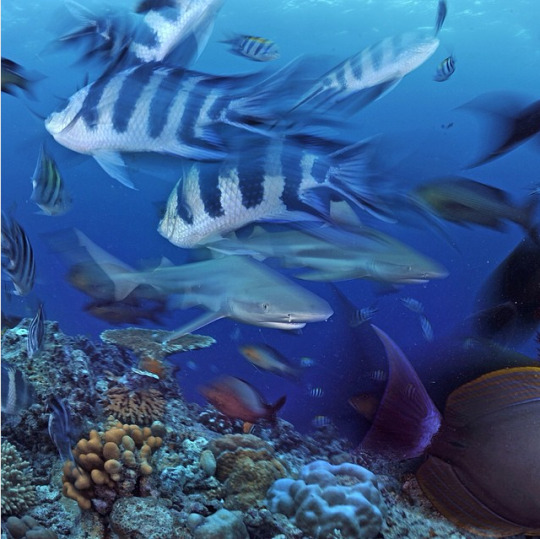

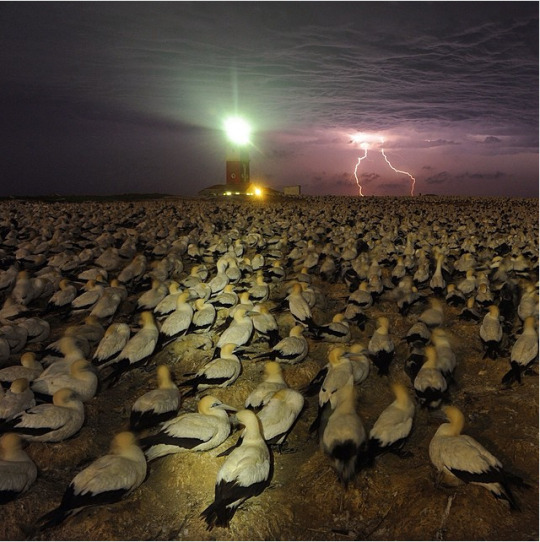
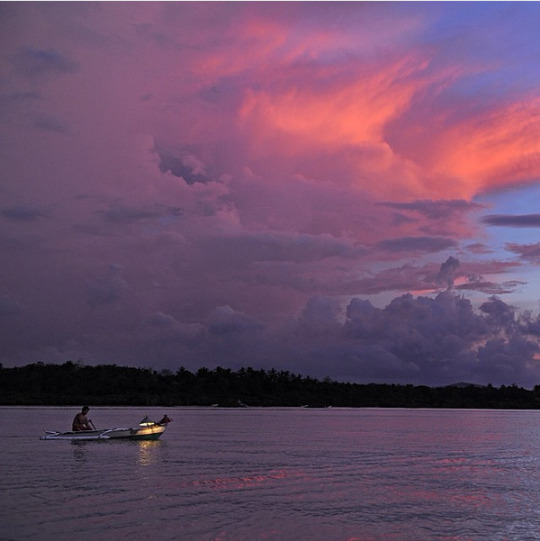
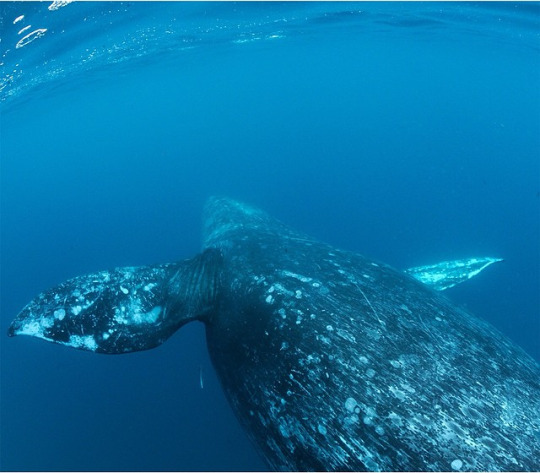


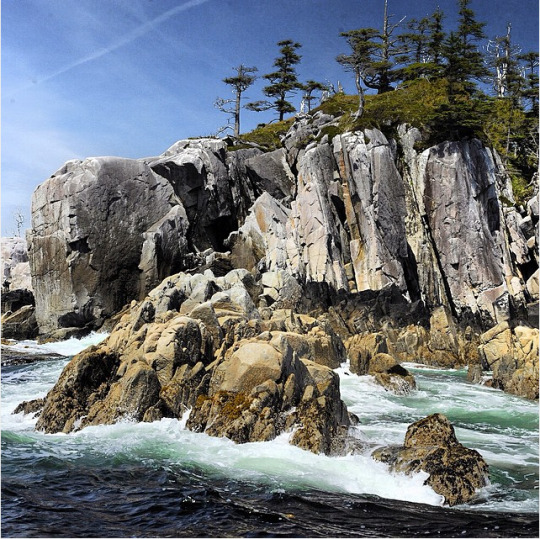
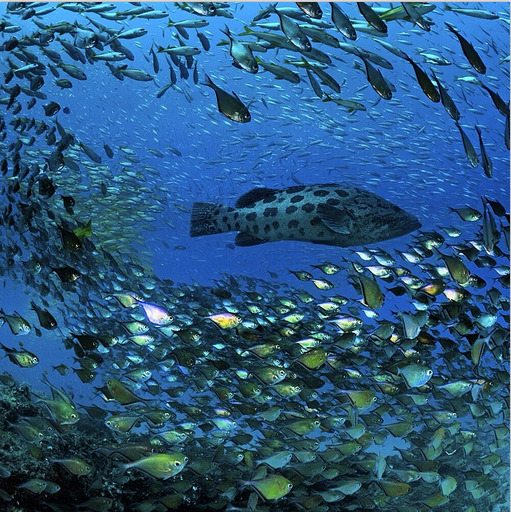


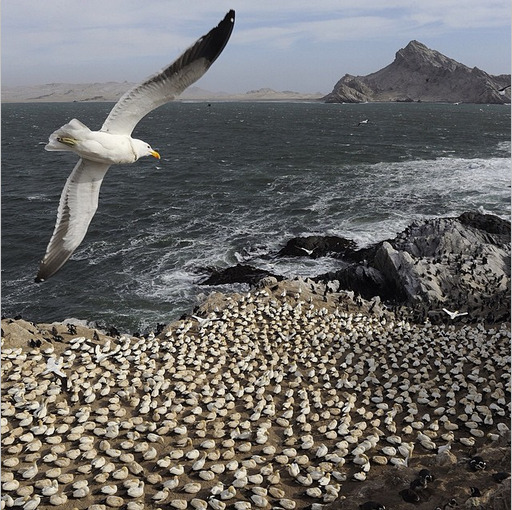




Photos and texts: @thomaspeschak
1-. A curious gray whale exhales almost directly into my camera
2-. A curious juvenile gray whale vigorously exhales and speeds past my camera in Mexico's San Ignacio Lagoon
3-. A Humpback whales breaches in the North Pacific Ocean off Canada's Great Bear Rainforest
4-. A dusky shark charges through a baitball of sardines
5-. y 6-. A whale sharks swins in shallow water in La Paz Bay, Baja California Sur
7-. A reef manta ray feeds on a plankton patch by barrel rolling over and over again in the same spot, not unlike a puppy chasings its own tail
8-. A reef manta ray feeds along the drop off at D'Arros Island an St. Joseph Atoll. Seychelles
9-. African peguins
10-. A endemic Socotra cormorant comes in to land on a roosting rock deep within the Fjords of Oman's Musandam Peninsula (2012)
11-. African peguins shelter and nest in decaying building long abandoned b the guano industry on Namibia's Halifax Island
12-. At Aldabra atoll green sea turtles often rest for hours on the sandy seabed between coral outcrops
13-. Blacktip reef sharks inspect the hull of our boat on Aldabra's tidal flats. Seychelles
14-. Blacktip reef sharks patrol the drop off where D'Arros Island's coral reef descendes into deeper water
15-. Cape fur seals surf Altantic swell in the Table Mountain Marine Protected Area
16-. Cape Gannet colony on Bird island bathed by lightening and the beam of the lighthouse
17-. The hunt begins at dusk and continuous deep into the night
18-. A curious gray whale swins upside down beneath our boat in Mexico's San Ignacio Lagoon
19-. A venomous lionfish hunts baitfish in Mozambique's Ponta do Ouro marine reserve, by @thomaspeschak
20-. A salmon leaps high into the air to clear a raging waterfall
21-. A wild rocky point just out into the North Pacific Ocean
22-. A large potato grouper hunts amongst schools of baitfish that seasonally drape southern Mozambique's reefs
23-. Dolphins of Indo pacific
29 notes
·
View notes
Note
Could you do Mittonia Hampsoni please? Thanks a ton!!
Moth Of The Day #258
Mittonia hampsoni
From the pyralidae family. They can be found in Cameroon, Democratic Republic of the Congo, Mozambique, South Africa, Zambia and Zimbabwe.


Image sources: [1] [2]
#moth#moths#lepidopterology#lepidoptera#nature#pretty moth#bugs#insect#moth of the day#motd#bug#insects#entomology#bugblr#lepiodoptery#african moth#beautiful moth#invertebrates#mittonia hampsoni#mittonia hampsoni moth#pyralidae#pyralidae moth
230 notes
·
View notes
Text


Aloe munchii
This Aloe species comes from the Chimanimani Mountains along the border between Zimbabwe and Mozambique. In habitat it can get ery tall, but our plant is only about 2 meters tall even after several decades. We have it planted where it gets covered in winter, because we doubt its ability to withstand our occasional freezing temperatures at this time of year. The gracefully recurving leaves are a delight all year long, but the red-orange flowers in winter are a special treat.
-Brian
24 notes
·
View notes
Text
2:58...
2 5 8
August 25th?
It's a Sunday... He's doing a festival in Zürich on the Saturday 24... So it wouldn't be AFHF related.
What else could 2 5 8 be?
2+5+8= 15. 1+5=6
Mmm.
What eeeelse? August 2025?
258, Mozambique country code.
58 2
2 to 3
8 5 2
okay, idk.
22 notes
·
View notes
Text
Mozambique's rubies: A blessing or a curse? | DW Documentary
youtube
In Mozambique, agriculture is the mainstay of the economy and the country has a great potential for growth in the sector. Agriculture employs more than 80 percent of the labour force and provides livelihoods to the vast majority of over 23 million inhabitants. Agriculture contributed 31.5 percent of the GDP in 2009, while commerce and services accounted for 44.9 percent. By contrast, 20 percent of the total export value in 2009 originated from the agriculture sector, mostly through the export of fish (mainly shrimps and prawns), timber, copra, cashew nuts and citrus, cotton, coconuts, tea and tobacco.[14]
There are large mineral deposits, but exploration has been constrained by the civil war (1977–1992) and poor infrastructure. The World Bank has estimated that there was the potential for exports worth US$200m by 2005 – in the late 1990s they totaled US$3.6m, some 1% of total exports, and a contribution of less than 2% of GDP. Minerals currently being mined include marble, bentonite, coal, gold, bauxite, granite, titanium and gemstones. Illegal exports from artisanal production are estimated at US$50 million.[original research?]
Mozambique exported its first batch of coal in 2011 and expects to become the world's largest coal exporter. It is also spending about US$50 billion in infrastructure projects to access its coal reserves. Mozambique is reported to have the fourth largest reserves of natural gas in the world, after Russia, Iran, and Qatar.[20]
The Our Lady of the Rosary Cathedral[1] (Portuguese: Catedral Metropolitana de Nossa Senhora do Rosário) also called Metropolitan Cathedral of Our Lady of the Rosary, is located in Beira,[2][3] a town in the African country of Mozambique[4] and is the cathedral of the Archdiocese of Beira.
Beira is where the Pungwe River meets the Indian Ocean. It is the fourth-largest city by population in Mozambique, after Maputo, Matola and Nampula. Beira had a population of 397,368 in 1997, which grew to 530,604 in 2019. A coastal city, it holds the regionally significant Port of Beira, which acts as a gateway for both the central interior portion of the country as well as the land-locked nations of Zimbabwe, Zambia and Malawi.
A marina (from Spanish [maˈɾina], Portuguese [mɐˈɾinɐ] and Italian [maˈriːna]: "related to the sea") is a dock or basin with moorings and supplies for yachts and small boats. A marina differs from a port in that a marina does not handle large passenger ships or cargo from freighters.
A fishmonger (historically fishwife for female practitioners) is someone who sells raw fish and seafood. Fishmongers can be wholesalers or retailers and are trained at selecting and purchasing, handling, gutting, boning, filleting, displaying, merchandising and selling their product. In some countries modern supermarkets are replacing fishmongers who operate in shops or fish markets.
Beaux-Arts Architecture: Banco da Beira; Casa Infante de Sagres, Beira; Edifício do Almoxarifado, Beira; Escola de Artes e Ofícios, Beira; Palácio dos Desportos, Beira; Standard Bank Building, Beira; Tribunal da Beira
S & M GOALS TEAMPLATE
Stretch Goals: Central African Republic Ranks Top 8 in FIFA World Rankings for Men's and Top 5 for Futsal
Micro Goals: All Time Laureus World Sports Awards Winner for Africans, Laureus Team Award, All Time African Footballer of the Year, AFCON Host Nation Champion*, African Transfer Record*, Insead and WSJ Conferences*, Jeune Afrique Cover*, Verified LinkedIn Member*, and Agriculture Startup Reality TV
CAPÔI HABITANT CURRENCY MODEL
Pigou Effect, Corporate Tax Havens, Capital Gains Tax Havens, Private-Public Sectors, Joint Venture Plantations, Market Extension Mergers, with Business Incubators, and Enterprise Foundation, Holding Company, Subsidiaries, and Horizontal Integration for Monopoly.
A currency union (also known as monetary union) is an intergovernmental agreement that involves two or more states sharing the same currency. These states may not necessarily have any further integration (such as an economic and monetary union, which would have, in addition, a customs union and a single market). [Pigou Effect Currency (Short FX), Currency Board Currency (Retirement Fixed Exchange Rate), Market Currency (FX Long Currency)]
Gross national product (GNP) GNP is related to another important economic measure called gross domestic product (GDP), which takes into account all output produced within a country's borders regardless of who owns the means of production. GNP starts with GDP, adds residents' investment income from overseas investments, and subtracts foreign residents' investment income earned within a country. Whilst GDP measures the total value of goods and services produced within a country's borders, GNP focuses on the income generated by its residents, regardless of their location.
Gross National Income (GNI) is the total amount of money earned by a nation's people and businesses. It is used to measure and track a nation's wealth from year to year. The number includes the nation's gross domestic product (GDP) plus the income it receives from overseas sources.
Agriculture Central Hedge Fund, Mining Unions: Peninsula Agronomique Engineering, Commodities Options Exchange (Credit Spread Options, Farm REITs, Crop Production; Fertelizers and Seeds; Equipment; Distribution and Processing Stocks, Ag ETFs and ETNs, Ag Mutual Funds), Tableau Économiques, Investments Farms REITs, Art Financing Mardi Gras
Index Franc: Tobacco-Tobacco Soil Index/Franc Tabac Currency Pair (TBS/TAF)
The overlapping generations (OLG) model; consumption-based capital asset pricing model (CCAPM); Endogenous growth theory; Material balance planning; Leontief paradox; Malinvestment; Helicopter money; Modern monetary theory
Mercantilism Spectrum of CDF/CFA
CDF Raw Materials and CFA Products. (Prices); CDF Holding Company and CFA Conglomerate Company. (Equity and Dividend Yield); CDF is Gold Standard and CFA is Helicopter Money. (FX Rate/Hedging); CDF Helicopter Money [Supplier Currency] and CFA as Purchasing Power [Consumer Currency] (Currency Union & Currency Board and Negative Interest Rates); CDF is Congolese Franc and CFA is Central African Franc
CHAMA ROXA
Purple Flame represents Spiritual Development for Martyrology in Mozambique
It is also a Slang Term for “What Religion do you practice?”
Team Name for Mozambique National Team
DOS SANTOS FREE-ROLE
Supporting Striker (Inverted Winger)
Central Winger (False 10)
Overlapping Run/Defensive Winger (Half-winger)
An inverted winger is a modern tactical development of the traditional winger position. Most wingers are assigned to either side of the field based on their footedness, with right-footed players on the right and left-footed players on the left.[65] This assumes that assigning a player to their natural side ensures a more powerful cross as well as greater ball protection along the touch-lines. However, when the position is inverted and a winger instead plays inside-out on the opposite flank (i.e., a right-footed player as a left inverted winger), they effectively become supporting strikers and primarily assume a role in the attack.[66]
The "false 10" or "central winger"[55] is a type of midfielder, which differs from the trequartista. Much like the "false 9", their specificity lies in the fact that, although they seemingly play as an attacking midfielder on paper, unlike a traditional playmaker who stays behind the striker in the centre of the pitch, the false 10's goal is to move out of position and drift wide when in possession of the ball to help both the wingers and fullbacks to overload the flanks. This means two problems for the opposing midfielders: either they let the false 10 drift wide, and their presence, along with both the winger and the fullback, creates a three-on-two player advantage out wide; or they follow the false 10, but leave space in the centre of the pitch for wingers or onrushing midfielders to exploit. False 10s are usually traditional wingers who are told to play in the centre of the pitch, and their natural way of playing makes them drift wide and look to provide deliveries into the box for teammates.
In Italian football, the term mezzala (literally "half-winger" in Italian) is used to describe the position of the one or two central midfielders who play on either side of a holding midfielder and/or playmaker. The term was initially applied to the role of an inside forward in the WM and Metodo formations in Italian, but later described a specific type of central midfielder. The mezzala is often a quick and hard-working attack-minded midfielder, with good skills and noted offensive capabilities, as well as a tendency to make overlapping attacking runs, but also a player who participates in the defensive aspect of the game, and who can give width to a team by drifting out wide; as such, the term can be applied to several different roles.
On occasion, the false-10 can also function in a different manner alongside a false-9, usually in a 4–6–0 formation. Midfield collective of False 9, False 10, Box to Box, Holding, Half Winger, Attacking, Defensive.
Thiago Motta’s ‘Super Offensive’ 2-7-2 Formation Explained: Instead of the traditional way of looking at a tactical set-up horizontally, the Brazil-born manager instead split the field into three vertical lanes. This means he effectively has seven players in the central channel with two players out wide on each flank.
We are not stretching the defensive line itsself, but the space between the defensive line and the goalkeeper
Adjust Free Role System to The Scoreboard
The Central African Games was an international multi-sport event for countries within Central Africa. (Boxing, Athletics, Tennis, Football, Rallycross, Olympic Weightlifting, Volleyball, Trap Shooting, Basketball)
The Central African Football Federations' Union, officially abbreviated as UNIFFAC[a], is a sports governing body representing the football associations of Central Africa.
Teenage Prospect World Cup Medium of Exchange Jersey/FIFA Potential Rating System 65-80 Minutes Time Played Instrument; Match Rating System
W; I; M; V; Box Keeping Formation with 3 Centre-Backs
Spacing, Possession, Pass Completion, and Counter Pressing with Pursuit and Ambush Predation One Team Box Touches and Capture the Flag with Analytics-Geometry Total Football Trixie Bet on CNS Drugs (Xanax and Modafinil); 1-1-2-1 Diamond Rover Futsal Pivot Formation
Define a run in one of two ways: (i) as a set of consecutive goals scored by one team, without the other team scoring a goal; (ii) as a set of consecutive scoring events by one team, each event being either a goal or one or more Set Piece. Play aggressive and with counter pressing and run it up on the score board in the first half and after halftime play defense. You get a break at half and it's easier to win when someone plays defense and looks for opportunities instead of Attacking.
Posterior Chain Super Compensation and Speed-Endurance (Elastic-Connective Tissue) Force-Velocity Curve; Crescent Moon Horizontal Plane Vertical Force Sprinting Mechanics.
WM or Diamond Rover Futsal Pivot Formation
Positional Game is Diamonds Tic-Tac-Toe with Enforcer and Avoider. Striker [Enforcer] (Inverted Winger and Centre Forward), Deep Lying Playmaker [Avoider] (Holding Midfielder and Inverted Winger), and Sweeper Wingback Deep Lying Playmaker [Avoider] (Centre Back). Use Playing Styles, Manipulated Positions, and Combinational Games for Positional Play as Johan Cruyff students.
Set Piece Stylistic Biomechanics: Shooting Knee at Wall for Curve and Placement Knee for Corner. Follow through with Shot with proper Body Alignment
Knee to Feet or Shoulder to Feet Cradling for Touch/Entertainment
UEFA Front Office Curriculum
DOS SANTOS Placement Mechanics: Ankle-Heel Linedrive and Arch-Knuckle Raised Curve; Placement Foot and Reverse Rotation with Shoulder for power and Accuracy; Arch of Feet at Target for Follow Through Accuracy
Agility Ladder Eyes Pocket: Eyes Between Defenders Feet and Ball, Numbered Footwork V-Step (Shifting Defenders with Momentum) et L-Step (Explosive First Step), All moves should form a Triangle or an Incomplete Triangle
Sprint Size Up: A series of feint Karaoké dribble moves with Eye Tricks (Fake Pass) but Sprint Position Finish
Triangle Philosophy: All Dribbling Moves should form a Triangle or an Incomplete Triangle while using V-Step (Shifting Defenders with Momentum) et L-Step (Explosive First Step).
Thé Crescent: In Close Dribbling; Crescent Footwork with L Shapes
On the Run Dribbling Moves: Letters and Shapes; Still Play 1 on 1: Numbered Footwork
À ma sauce Courts: Drills Side/Box Play with 1 Net; Design Vaporwave Action Painting Angels; Knee for Direction and Sole Drags for Dribbling Touch and Crescent Moon Sprint Mechanics
Gambling Games: 5 Roll (Captain, Ship, Crew); Live-Pool Betting Monopoly
Stylistic Biomechanics: Dribbling Foot To Ball Contact (Balls of Feet and Arch of Feet); Knee for Direction; Foot Drags; & Hip Angle, Crescent Moon Running Mechanics, and Laces Kick.
Futsal Courts: Drills Side/Box Play with 1 Net; Design Vaporwave Action Painting Angels; Knee for Direction and Sole Drags for Dribbling Touch and Crescent Moon Sprint Mechanics
Diamond Football (15 mins)
Set Up
-Lay out two overlapping sets of 4 flat markers in the positions shown above.
-Ask the players to stand on a flat marker for their teams colour (Red on Red, Yellow on Yellow).
Instruction
-Whenever the ball goes out for a kick in or for the defenders ball, the players must stand on their markers before play begins.
-As soon as the ball has been played in, players are free to move.
-Reset everytime the ball goes out.
Coaching Points, Progressions Ect.
-Ask players to shout out what each position on the park is to devlop understanding of their roles.
-If you decide to go to a normal game , leave the markers out for a visual aid for the players.
-If more than 8 players, Add in Goalkeepers who would then play the ball out to the DF,LM,RM.
-Rotate Positions, Ask Players to stand on a marker they haven't been on before
RUSSE NOIR ACCENT
Lingua Franca of Renaissance Latin (Vocabulary) and Atlantic–Congo Fon (Grammar).
Volta–Congo is a major branch of the Atlantic–Congo family. Fon (fɔ̀ngbè, pronounced [fɔ̃̀ɡ͡bē][2]) also known as Dahomean is the language of the Fon people. It belongs to the Gbe group within the larger Atlantic–Congo family.
In linguistic typology, subject–verb–object (SVO) is a sentence structure where the subject comes first, the verb second, and the object third.
Haitian Creole (/ˈheɪʃən ˈkriːoʊl/; Haitian Creole: kreyòl ayisyen, [kɣejɔl ajisjɛ̃];[6][7] French: créole haïtien, [kʁe.ɔl a.i.sjɛ̃]), or simply Creole (Haitian Creole: kreyòl), is a French-based creole language spoken by 10 to 12 million people worldwide, and is one of the two official languages of Haiti (the other being French), where it is the native language of the vast majority of the population. The language emerged from contact between French settlers and enslaved Africans during the Atlantic slave trade in the French colony of Saint-Domingue (now Haiti) in the 17th and 18th centuries. Although its vocabulary largely derives from 18th-century French, its grammar is that of a West African Volta-Congo language branch, particularly the Fongbe and Igbo languages.
Prose Accent Congo and Modern Accent Congo.
Full Lips Endings with Vertical Narrow Mouth and Soft Rs.
A noun phrase – or NP or nominal (phrase) – is a phrase that usually has a noun or pronoun as its head, and has the same grammatical functions as a noun.
BELMÔNT'S SIN INDEX FUND PORTFOLIO
Sin stock sectors usually include alcohol, tobacco, gambling, sex-related industries (Cabaret and Burlesque), and weapons manufacturers.
Diageo
Phillip Morris
Sports Betting Investment Trust
Pharmaceuticals
Business Clusters with Scrum Management and Accelerators to produce Festivals.
Example: Create a Index Fund Portfolio of 15-20 Stocks and using Supply Side Economics to create Decentralized Gambling Economy.
BELMÔNT'S DECENTRALIZED GAMBLING ECONOMY
Corporate-Capital Gains Tax Haven
High Stakes Minimum Buy In
Card Gambling (Signal and President): Top 2 highest bids fight for the Coup d'état and the other two are lesser men, the lesser men are subordinates that aid in playing cards for the warlord, the winning team splits the money, the warlords switches based on the 13 cards dealt and bets placed, the first team to shed all of their cards win.
Domestic Gambling: Boxing
Retirement Gambling: Boat Racing
Residency Program for Tax Benefits
BELMÔNT'S TURF ACCOUNTING MODEL
+EV
Python Programming Gaussian Distribution
Exotic Options Trading Live Betting
Parlays Minimum for Round Robins
Daily Fantasy Sports Rakes
RUSSE NOIR PALACE
Definitions of ballroom. noun. large room used mainly for dancing. synonyms: dance hall, dance palace**. types: disco, discotheque.
Go Go Music Influenced, Eurphoric Trance Chord Progression Melody, Progressive House and Drum n' Bass Percussion-808 Call and Response Staccato Polyrhythm or Layered Kick and Punch 808.
In his 1972 study of French lute music, scholar Wallace Rave compiled a list of features he believed to be characteristic of style brisé. Rave's list included the following: the avoidance of textural pattern and regularity in part writing; arpeggiated chord textures with irregular distribution of individual notes of the chord; ambiguous melodic lines; rhythmic displacement of notes within a melodic line; octave changes within melodic line; irregular phrase lengths.
Have the Snare and Kick say, "Hi, How are you?" And the 808 say, "I am good thanks for asking.”
Use progressive House to push the Drums Conversation to either Fast and Punchy for Happy or Slow and Deep for Sad.
In technical terms, "go-go's essential beat is characterized by a five through four syncopated rhythm that is underscored prominently by the bass drum and snare drum, and the hi-hat... [and] is ornamented by the other percussion instruments, especially by the conga drums, rototoms, and hand-held cowbells."[5]
Polyrhythm: In music, a cross-beat or cross-rhythm is a specific form of polyrhythm. The term cross rhythm was introduced in 1934 by the musicologist Arthur Morris Jones (1889–1980). It refers to a situation where the rhythmic conflict found in polyrhythms is the basis of an entire musical piece.[1]
Four-on-the-floor (or four-to-the-floor) is a rhythm used primarily in dance genres such as disco and electronic dance music. It is a steady, uniformly accented beat in 4. 4 time in which the bass drum is hit on every beat (1, 2, 3, 4).[1] This was popularized in the disco music of the 1970s[2] and the term four-on-the-floor was widely used in that era, since the beat was played with the pedal-operated, drum-kit bass drum.[3][4] (Punch 808-Kick)
Polyrhythm 4 on the Floor examples 2:4 or 5:4
Hard trance is often characterized by strong, hard (or even downpitch) kicks, fully resonant basses and an increased amount of reverberation applied to the main beat. Melodies vary from 140 to 180 BPMs and it can feature plain instrumental sound in early compositions, with the latter ones tending to implement side-chaining techniques of progressive on digital synthesizers.
Singles Only Email Raves Blogger then Multi Market Distribution Deal: A distribution deal is a contract to release the music to platforms, but not own the publishing or exclusively lock the artist in. Record Artist Producer Label: Have Polyrhythm Artist earn Streaming Percentage under a Recording Artist Deal. Label has Distribution Above Me and I have Manufacturing over Polyrhythm Artist. Have a end of the Year Album for New Year's Raves!
BELMÔNT'S SYSTEM: CAPÔI RETAINER AGREEMENT WITH ASSET PROTECTION TRUST
Capo: Describes a ranking made member of a family who leads a crew of soldiers. A capo is similar to a military captain who commands soldiers. Soldier: Also known as a “made man,” soldiers are the lowest members of the crime family but still command respect in the organization.
A capo is a "made member" of an Italian crime family who heads a regime or "crew" of soldiers and has major status and influence in the organization.
Consigliere: Defense and Corporate Lawyers
Head Boss: Ministry of Medicine
Underboss: Pharmaceutical Industry
Capo: CAPÔI RETAINER AGREEMENT
Soliders: Artisans
Commercialism is the application of both manufacturing and consumption towards personal usage, or the practices, methods, aims, and distribution of products in a free market geared toward generating a profit.
Commercial art is art created for advertising or marketing purposes. Commercial artists are hired by clients to create images and logos that sell products. Unlike works of fine art that convey an artist's personal expression, commercial art must address the client's goals.
The word 'Commercial' is defined as follows: Concerned with or engaged in commerce. Commerce is the exchange of goods or services among two or more parties.
Craftsmen are committed to the medium, not to self-expression. Artists are committed to their self-expression, not the medium.
A medium of exchange is an intermediary instrument and system used to facilitate the purchase and sale of goods and services between parties.
Stretch and Micro Goals
Music Medium System: Distribution and Retailers Contract Theory (System) for Music (Instrument)
Football Medium System: Analytics and Geometry for Free Role (System) Trixies (Instrument)
Age 16-19
Bond Funds
Farmland REITS
CFDS
Real Estate Brokerage Trust Account
Age 20-30
Farmland Recession Proof Stocks (Cosmetics, AgTech, Ag ETFS, AgETN)
Incubator and Startup Accelerators
Real Estate Joint Ventures
Age 30-40
Farmland Blue Chip Indexes w/ Credit Spread Options
CURRENCY, OIL, & GOLD COMMODITIES CANDLESTICK CHARTS
Swing Trading: Use mt4/mt5 With Heiken Ashi Charts, Setting at 14 or 21 Momentum Indicator above 0 as Divergence Oscillator and Volume Spread Analysis as Reversal Oscillator and Trade when bullish candlesticks above 200 exponential moving average and/or 20 exponential moving average (EMA) on H1 (Hourly) Time Frame; use H4 (4 Hours) and D1 (1 Day) as reference.
TUNNEL STRATEGY (OFFSHORE BANKING)
Purpose: Permanent Residency Card
$250k Deposit
$125k: 60/40 portfolio, 60% Fixed Income & REITs and 40% Blue Chip Stocks
$50k: Guaranteed Investment Certificates (GICs) and term deposits are secured investments. This means that you get back the amount you invest at the end of your term. The key difference between a GIC and a term deposit is the length of the term. Term deposits generally have shorter terms than GICs.
$75k: Spending Cash
SIN STOCKS PORTFOLIO
Sin stock sectors usually include alcohol, tobacco, gambling, sex-related industries, and weapons manufacturers.
Sports Betting Investment Trust
Pharmaceuticals
Example: Create a Index Fund Portfolio of 15-20 Stocks and using Supply Side Economics to create Decentralized Gambling Economy.
FESTIVALS DEAL
Singles Only Email Raves Blogger then Multi Market Distribution Deal: A distribution deal is a contract to release the music to platforms, but not own the publishing or exclusively lock the artist in. Record Artist Producer Label: Have Polyrhythm Artist earn Streaming Percentage under a Recording Artist Deal. Label has Distribution Above Me and I have Manufacturing over Polyrhythm Artist. Have a end of the Year Album for New Year's Raves!
NEUROPLASTICITY DRUG-CRIME NEXUS BASED ON TRAFFICKING
CPP, CNS Depressants, et FENTALOGS: Cul-de-sac
Defensive Penalty Capture The Flag Raiding Warfare
Grey-Decentralized Markets
Bastilles: Cul-de-sac Artist Résidences Penthouse Complexes
Polyrhythm Raves
Acid House Art Gallery
International Film Festival
Hôtel Chefs
Seigneurial System/Tableau Economique Raw Material Économics Production Spot
Surautomatism
Discount Networking Acid House Party
Opium Dens and Fragrance Festivals
Pill Pressers
CNS depressants
Upper-tier County System
Defense Lawyers are Traplords (Trafficking P4P and Malicious Prosecution)
Cash Conversion Cycle (CCC)
Brain Receptor Dealing
Neuroplasticity Drug-Crime Nexus
Religious Ecstasy
Entheogens are psychedelic drugs—and sometimes certain other psychoactive substances—used for engendering spiritual development or otherwise in sacred contexts
Live-Pool Betting Monopoly Board Game
Summary Sentencing
Urban Level: Street Culture Art Gallery (Street culture may refer to: Urban culture, the culture of towns and cities, Street market, Children's street culture, Street carnival, Block party, Street identity, Street food, Café culture, Several youth subculture or counterculture topics pertaining to outdoors of urban centers. These can include: Street art, Street photography, Street racing, Street wear, Hip-hop culture, Urban fiction, Street sports, Streetball, Flatland BMX, Freestyling), Art Pedagogy, Artist Residency, Art Schools, and Art Plugs
Art Pedagogy: Arts-based pedagogy is a teaching methodology in which an art form is integrated with another subject matter to impact student learning. 28-30. Arts-based pedagogy results in arts-based learning (ABL),11 which is when a student learns about a subject through arts processes including creating, responding or performing. Aesthetic Teaching: Seeking a Balance between Teaching Arts and Teaching through the Arts. In aesthetic education, learning must be developed especially with the inclusion of sensations and with the help of feelings. Sensations and feelings should lead to movement, representation, and expression. Aesthetic learning often entails learning to distinguish certain qualities or objects aesthetically in different ways depending on the situation and the purpose. Certain things can be experienced in negative ways in one activity and in positive ways in another.
A designer drug is a structural or functional analog of a controlled substance that has been designed to mimic the pharmacological effects of the original drug, while avoiding classification as illegal and/or detection in standard drug tests
Patchwork tattoos are a collection of tattoos collaged together to create an overall design. Each individual 'patch' of the tattoo can be a different design, symbol or element with a little space in between. Patchwork tattoos are a collection of tattoos collaged together to create an overall design. In short, the gun-toting angel was a multifaceted metaphor. “It undoubtedly also reflected the Catholic Counter-Reformation militaristic rhetoric,” wrote Donahue-Wallace, “which promoted the church as an army and heavenly beings as its soldiers.”
DECADENCE AESTHETICS THEORIES
Slogan
J'Cartier, Je cours après les vœux de champagne,
Subjective
Based on or influenced by personal feelings, tastes, or opinions
Gastronomy
Precarious Balance
Precariously: If something is happening or positioned precariously, it's in danger. A glass could be precariously balanced on the edge of a table. If something is on the verge of danger, then the word precariously fits.
Grey & Decentralized Markets
Tableau Économique
Semblance
Semblance is generally used to suggest a contrast between outward appearance and inner reality.
High Socioeconomic Status & Tattoos
Phantasmagorical
Having a fantastic or deceptive appearance
adjective. having a fantastic or deceptive appearance, as something in a dream or created by the imagination. having the appearance of an optical illusion, especially one produced by a magic lantern.
Socioeconomic Status Development Immigration Multilingual Sensory Play
Law of Polarity in Relationships
In any successful relationship that has an intimate connection and sexual attraction, there is polarity. What does this mean exactly? Polarity in relationships is the spark that occurs between two opposing energies: masculine and feminine. Gender does not affect whether you have masculine or feminine energy.
Second Reflection
Burden Aesthetics with Intentions
The Second Reflection lays hold of the Technical Procedures
Tattoos
SOCIO-PSYCHOLOGY
Keystone Theory Habits
Game Theory
Behavioral Finance
Self-actualization is the complete realization of one's potential, and the full development of one's abilities and appreciation for life. This concept is at the top of the Maslow hierarchy of needs, so not every human being reaches it.
Potential Psychology: Psychological potential is a very broad concept. It may include one's capacity to conform, change, re-invent oneself, bounce back from adversity, etc.
SOCIO-FORMAL SCIENCE
+EV Optimal Game Theory Poker
Civil, Agriculure, Solvent Levelling Effect Chemical Reaction, and Biomechanical Engineering
SOCIO-PHILOSOPHY
Ontology
IMPERIALISM, THE HIGHEST STAGE OF CAPITALISM
Imperialism, the Highest Stage of Capitalism,[1] originally published as Imperialism, the Newest Stage of Capitalism,[2][3] is a book written by Vladimir Lenin in 1916 and published in 1917. It describes the formation of oligopoly, by the interlacing of bank and industrial capital, in order to create a financial oligarchy, and explains the function of financial capital in generating profits from the exploitation colonialism inherent to imperialism, as the final stage of capitalism. The essay synthesises Lenin's developments of Karl Marx's theories of political economy in Das Kapital (1867).[4]
Tax Mergers Law; Market-extension merger: Two companies that sell the same products in different markets. 4.2.2 Corporate Taxation At the corporate level, the tax treatment of a merger or acquisition depends on whether the acquiring firm elects to treat the acquired firm as being absorbed into the parent with its tax attributes intact, or first being liquidated and then received in the form of its component assets.
SOCIOCULTURAL THEORY OF DEVELOPMENT
Seconds Liberal Arts are often viewed as pre-professional since, while conceived of as fundamental to citizenship, they address the whole person in recognition that our moral and spiritual identities develop best through participation in a society that perpetually renews the rights and responsibilities of membership.
Executive management master's degree programs often result in an Executive Master of Business Administration, or EMBA. They are primarily designed to act as accelerated graduate programs for working professionals who already hold management or executive positions.
Engineering college means a school, college, university, department of a university or other educational institution, reputable and in good standing in accordance with rules prescribed by the Department, and which grants baccalaureate degrees in engineering.
Monopoly Family Boarding Schools: The socio-historical context refers to the societal and historical conditions and circumstances that influence events or individuals. It involves elements like the cultural, economic, and political circumstances during a certain time period.
Agriculturism is an ideology promoting rural life, a traditional way of life. It is characterized by the valorization of traditional values (the family, the French language, the Catholic religion) and an opposition to the industrial world.
CAPÔI CLASS STRUCTURE
Demonym Examples: CAR Congolese, Gabon Congolese, Afrikaans Congolese, and Congolese
Monopoly Family (Apartheid)
Chief Executive of State (Apartheid)
Political Class (RUSSE NOIR)
Upper Class (RUSSE NOIR)
Working Class (RUSSE NOIR)
JEAN-CLAUDE TRAORÉ BUSINESS ADVICE
Blue Ocean Strategy; Solvent Levelling Effect Chemical Reaction Engineering and Economic Science.
TENNIS AGRICULTURE
A clay-court specialist is a tennis player who excels on clay courts, more than on any other surface.
Due in part to advances in racquet technology, current clay-court specialists are known for employing long, winding groundstrokes that generate heavy topspin; such strokes are less effective on faster surfaces on which the balls do not bounce as high. Clay-court specialists tend to slide more effectively on clay than other players. Many of them are also very adept at hitting the drop shot, which can be effective because rallies on clay courts often leave players pushed far beyond the baseline. Additionally, the slow, long rallies require a great degree of mental focus and physical stamina.
CASAPIANOS MARTYROLOGY ORDER (CATHOLIC COUNTER-REFORMATION)
The Casa Pia is a Portuguese institution founded by Maria I, known as A Pia ("Mary the Pious"), and organized by Police Intendant Pina Manique in 1780, following the social disarray of the 1755 Lisbon earthquake. For almost three centuries, thousands of young boys and girls were raised by Casa Pia, including many public personalities, called casapianos. Casa Pia is Portugal's largest educational institution dedicated to helping youngsters in risk of social exclusion or without parental support. The organisation is composed of ten schools and enrolls approximately 4700 students. In addition to standard schooling, the organisation also provides boarding for children in need. It strives to enable these youngsters to become healthy and successful members of society, by developing intellectual, manual, and physical traits, in an environment promoting spiritual, moral, and religious values. The institution is proud to have had amongst its students many outstanding Portuguese personalities, including politicians, journalists, and artists. A martyrology is a catalogue or list of martyrs and other saints and beati arranged in the calendar order of their anniversaries or feasts. Local martyrologies record exclusively the custom of a particular Church. Local lists were enriched by names borrowed from neighbouring churches.[1] Consolidation occurred, by the combination of several local martyrologies, with or without borrowings from literary sources.
The Canons Regular of St. Augustine are priests who live in community under a rule (Latin: regula and κανών, kanon, in Greek) and are generally organised into religious orders, differing from both secular canons and other forms of religious life, such as clerics regular, designated by a partly similar terminology. As religious communities, they have laybrothers as part of the community.
Clerics regular are clerics (mostly priests) who are members of a religious order under a rule of life (regular). Clerics regular differ from canons regular in that they devote themselves more to pastoral care, in place of an obligation to the praying of the Liturgy of the Hours in common, and have fewer observances in their rule of life.
Lay brother is a largely extinct term referring to religious brothers, particularly in the Catholic Church, who focused upon manual service and secular matters, and were distinguished from choir monks or friars in that they did not pray in choir, and from clerics, in that they were not in possession of (or preparing for) holy orders.[1][2][3][4][5]
In female religious institutes, the equivalent role is the lay sister. Lay brothers were originally created to allow those who were skilled in particular crafts or did not have the required education to study for holy orders to participate in and contribute to the life of a religious order.
Lay brothers were found in many religious orders. Drawn from the working classes, they were pious and hardworking people, who though unable to achieve the education needed to receive holy orders, were still drawn to religious life and were able to contribute to the order through their skills. Some were skilled in artistic handicrafts, others functioned as administrators of the orders' material assets. In particular, the lay brothers of the Cistercians were skilled in agriculture, and have been credited for the tilling of fertile farmland.[1]
Lay sisters were found in most of the orders of women, and their origin, like that of the lay brothers, is to be found in the necessity of providing the choir nuns with more time for the Office and study, as well as creating the opportunity for the illiterate to join the religious life. They, too, wore a habit different from those of the choir sisters, and their required daily prayers consisted of prayers such as the Little Office or a certain number of Paters.[1]
All canons regular are to be distinguished from secular canons who belong to a resident group of priests but who do not take public vows and are not governed in whatever elements of life they lead in common by a historical rule. One obvious place where such groups of priests are required is at a cathedral, where there were many Masses to celebrate and the Divine Office to be prayed together in community.
In modern astrology, Mars is the primary native ruler of the first house. Traditionally however, Mars ruled both the third and tenth houses, and had its joy in the fifth house. While Venus tends to the overall relationship atmosphere, Mars is the passionate impulse and action, the masculine aspect, discipline, willpower and stamina.
Mars rules over Tuesday and in Romance languages the word for Tuesday often resembles Mars (in Romanian, marți, in Spanish, martes, in French, mardi and in Italian "martedì"). The English "Tuesday" is a modernised form of "Tyr's Day", Tyr being the Germanic analogue to Mars. Dante Alighieri associated Mars with the liberal art of arithmetic. In Chinese astrology, Mars is ruled by the element fire, which is passionate, energetic and adventurous.
According to John Clements, the term martial arts itself is derived from an older Latin term meaning "arts of Mars", the Roman god of war, and was used to refer to the combat systems of Europe (European martial arts) as early as the 1550s
A religious congregation is a type of religious institute in the Catholic Church. They are legally distinguished from religious orders – the other major type of religious institute – in that members take simple vows, whereas members of religious orders take solemn vows.
In the Catholic Church, a religious order is a community of consecrated life with members that profess solemn vows. They are classed as a type of religious institute.[1]
Catholic School Girls Moon Evangelical Prophets: Consecrated life is "placed in a privileged position in the line of evangelical prophecy," whereby its “charismatic nature” and communal discernment of the Spirit "makes it capable of inventiveness and originality.”
Men Mars Angelology Conversion System: Church Enterprises (Planetary Intelligence Church District Real Estate; Liberal Arts Catholic Immersion Schools; Gold; Athletics; Cooking);
Church Gatherings (School Nights Virgil, Weekend Noon Mass then Weekend Sports League) Francis de Sales and Don St. Bosco Influence
Harquebusier Angels Patchwork Tattoos: Biblical Crowns, Praying Hands, Gun Toting Angels, Dirty Dancing Angels, Drug Using Angels, Heavenly Choir, Summa Theologica Sherman, Saints and Pastors, Hebrew Tetragram, Council of Trent
HARQUEBUSIER ANGELS GANG BLUEPRINT: PARDISUS MEDIAE; Spirit Unity Oversoul Angelology Shaman, Eros Influence Angels: Ecstasy-Painkillers Trafficking Angel Spirit Type Oversoul, Jupiter-Mars-Venus with Planetary Intelligence; Erotes are Horcruxes, Google Imprint Oversoul, Choice of Choir is Heavenly Host, Lightning-Ice Element, Wings Transfer Invocation, MARS-JUPITER Syncretism Planetary Intelligence, ESTJ Sensory Myers-Briggs Personality Indicator Syncretism, Church Expenses Occupation (Festivals, Venues, Freeports, Art Gallery, Underground Garages, Tobacco Store, Restaurants, Réal Estate Brokerage, Impure Aesthetic Thrillers Publishing Imprint et Production Company, Body Etching, Lipodissolve, and Hyaluronic Acid Fillers Cosmetics Surgery
ANGOLAN HARQUEBUSIER ANGELS STRUCTURE; Commission on the Social and Cultural Affairs; Commission for Ecumenism; The Commission on Christian Education; Liturgical Commission; Missionary Committee; Chief Executive of State and Military Religion Legislation; Stretch and Micro Goals
Material religion is a framework used by scholars of religion to examine the interaction between religion and material culture. It focuses on the place of objects, images, spaces, and buildings in religious communities. The framework has been promoted by scholars such as Birgit Meyer, Sally Promey, S. Brent Plate, David Morgan, etc.
Physiocracy (French: physiocratie; from the Greek for "government of nature") is an economic theory developed by a group of 18th-century Age of Enlightenment French economists who believed that the wealth of nations derived solely from the value of "land agriculture" or "land development" and that agricultural products should be highly priced.[1] Their theories originated in France and were most popular during the second half of the 18th century. Physiocracy became one of the first well-developed theories of economics.
The Bible typically describes the Heavenly host as being made up of angels, and gives several descriptions of angels in military terms, such as their encampment (Genesis 32:1–2), command structure (Psalms 91:11–12; Matt.13:41; Rev.7:2), and participation in combat (Job 19:12; Rev.12:7). Other passages indicate other entities make up the divine army, namely stars (Judges 5:20, Isaiah 40:26).[1][full citation needed] In Christian theology, the heavenly host participate in the war in Heaven.
The doctrine or theory of immanence holds that the divine encompasses or is manifested in the material world. It is held by some philosophical and metaphysical theories of divine presence. Immanence is usually applied in monotheistic, pantheistic, pandeistic, or panentheistic faiths to suggest that the spiritual world permeates the mundane.
The Dionysian Mysteries were a ritual of ancient Greece and Rome which sometimes used intoxicants and other trance-inducing techniques (like dance and music) to remove inhibitions and social constraints, liberating the individual to return to a natural state.
Religious nationalism can be understood in a number of ways, such as nationalism as a religion itself, a position articulated by Carlton Hayes in his text Nationalism: A Religion, or as the relationship of nationalism to a particular religious belief, dogma, ideology, or affiliation. This relationship can be broken down into two aspects: the politicisation of religion and the influence of religion on politics.
Dioceses ruled by an archbishop are commonly referred to as archdioceses; most are metropolitan sees, being placed at the head of an ecclesiastical province. In the Catholic Church, some are suffragans of a metropolitan see or are directly subject to the Holy See.
The body of light, sometimes called the 'astral body'[a] or the 'subtle body,'[b] is a "quasi material"[1] aspect of the human body, being neither solely physical nor solely spiritual, posited by a number of philosophers, and elaborated on according to various esoteric, occult, and mystical teachings. Other terms used for this body include body of glory,[2] spirit-body, luciform body, augoeides ('radiant body'), astroeides ('starry or sidereal body'), and celestial body.[3] The concept derives from the philosophy of Plato: the word 'astral' means 'of the stars'; thus the astral plane consists of the Seven Heavens of the classical planets. The idea is rooted in common worldwide religious accounts of the afterlife[4] in which the soul's journey or "ascent" is described in such terms as "an ecstatic, mystical or out-of body experience, wherein the spiritual traveller leaves the physical body and travels in their body of light into 'higher' realms."[5]
The canon law of the Catholic Church (from Latin ius canonicum[1]) is "how the Church organizes and governs herself".[2] It is the system of laws and ecclesiastical legal principles made and enforced by the hierarchical authorities of the Catholic Church to regulate its external organization and government and to order and direct the activities of Catholics toward the mission of the Church.
An institute of consecrated life is an association of faithful in the Catholic Church canonically erected by competent church authorities to enable men or women who publicly profess the evangelical counsels by religious vows or other sacred bonds "through the charity to which these counsels lead to be joined to the Church and its mystery in a special way".[1] They are defined in the 1983 Code of Canon Law under canons 573–730. The Congregation for Institutes of Consecrated Life and Societies of Apostolic Life has ecclesial oversight of institutes of consecrated life.[2]
In Christianity, the three evangelical counsels, or counsels of perfection, are chastity (NEVER), poverty (or perfect charity), and obedience (RECKLESS ABANDONMENT).[1] As stated by Jesus in the canonical gospels,[2] they are counsels for those who desire to become "perfect" (τελειος, teleios).[3][4] The Catholic Church interprets this to mean that they are not binding upon all, and hence not necessary conditions to attain eternal life (heaven), but that they are "acts of supererogation", "over and above" the minimum stipulated in the biblical commandments.[5][6]
Catholics who have made a public profession to order their lives by the evangelical counsels, and confirmed this by public vows before their competent church authority (the act of religious commitment known as a profession), are recognised as members of the consecrated life.
The Council of Trent (Latin: Concilium Tridentinum), held between 1545 and 1563 in Trent (or Trento), now in northern Italy, was the 19th ecumenical council of the Catholic Church. Prompted by the Protestant Reformation at the time, it has been described as the embodiment of the Counter-Reformation. The Council issued key statements and clarifications of the Church's doctrine and teachings, including scripture, the biblical canon, sacred tradition, original sin, justification, salvation, the sacraments, the Mass, and the veneration of saints[4] and also issued condemnations of what it defined to be heresies committed by proponents of Protestantism. The consequences of the Council were also significant with regard to the Church's liturgy and censorship.
Initiated in part to address the challenges of the Protestant Reformations,[3] the Counter-Reformation was a comprehensive effort arising from the decrees of the Council of Trent. The effort produced apologetic and polemical documents, heresy trials, anti-corruption efforts, spiritual movements, the promotion of new religious orders, and the flourishing of new art and musical styles.
Tradwave is a Catholic artistic style using synthwave and vaporwave art to promote traditional catholicism. Tradwave usually uses traditional catholic paintings, sculptures, or photographs of saints, given with vaporwave effects, often with a bible verse or quote about catholicism. The art usually tries to convey a resurrection of catholic spirituality in the modern atheist world. Figures often depicted in Tradwave art include Jesus Christ, the Virgin Mary, Ven. Fulton Sheen, Cardinal Robert Sarah, and Mother Angelica.
Tradwave music often takes the form of two main styles. One of them is catholic hymns with vaporwave effects and traditional Vaporwave/Lo-Fi music. It can also have quotes from modern prolific Catholic figures, such as Ven. The other theme is Fulton Sheen and Cardinal Robert Sarah.
Heavenly Virtues: Another phrase to describe this obedience to the voice is “reckless abandon.” It simply means that we let God do what God wants to do through us. It means if He tells us to do something or say something—we do it.
Intercession or intercessory prayer is the act of praying to a deity on behalf of others, or asking a saint in heaven to pray on behalf of oneself or for others. Intercession of the Saints is a Christian doctrine that maintains that saints can intercede for others. To intercede is to go or come between two parties, to plead before one of them on behalf of the other. In ecclesiastical usage both words are taken in the sense of the intervention primarily of Christ, and secondarily of the Blessed Virgin and the angels and saints, on behalf of men.[2] The doctrine is held by the Catholic, Eastern Orthodox Churches, the Assyrian Church of the East, the Oriental Orthodox churches , and some Lutherans and Anglicans (chiefly those of Evangelical Catholic or Anglo-Catholic churchmanship, respectively).[3] The practice of asking saints for their intercession can be found in Christian writings from the 3rd century onwards.[4][5][6] Catholic doctrine supports intercessory prayer to saints. This practice is an application of the doctrine of the Communion of saints. Some of the early basis for this was the belief that martyrs passed immediately into the presence of God and could obtain graces and blessings for others, which naturally and immediately led to their direct invocation. A further reinforcement was derived from the cult of the angels which, while pre-Christian in its origin, was heartily embraced by the faithful of the sub-Apostolic age. The doctrine of intercession and invocation was set forth by the Council of Trent, which teaches that "... the saints who reign together with Christ offer up their own prayers to God for men. It is good and useful suppliantly to invoke them, and to have recourse to their prayers, aid, and help for obtaining benefits from God, through His Son Jesus Christ our Lord, Who alone is our Redeemer and Saviour".[10] Intercessory prayer to saintly persons who have not yet been beatified can also practiced by individuals, and evidence of miracles produced as a result of such prayer is very commonly produced during the formal process of beatification and canonization.
In short, the gun-toting angel was a multifaceted metaphor. “It undoubtedly also reflected the Catholic Counter-Reformation militaristic rhetoric,” wrote Donahue-Wallace, “which promoted the church as an army and heavenly beings as its soldiers.” These "Harquebusier Angels" or "Arcabuceros" are full-length depictions of winged angels, elaborately dressed, and carrying matchlock guns (harquebuses).
The related term astrolatry usually implies polytheism. In anthropological literature these systems of practice may be referred to as astral cults.
A friar is a member of one of the mendicant orders in the Roman Catholic Church. There are also friars outside of the Roman Catholic Church, such as within the Anglican Communion. The term, first used in the 12th or 13th century, distinguishes the mendicants' itinerant apostolic character, exercised broadly under the jurisdiction of a superior general, from the older monastic orders' allegiance to a single monastery formalized by their vow of stability. A friar may be in holy orders or be a non-ordained brother. The most significant orders of friars are the Dominicans, Franciscans, Augustinians, and Carmelites.[1]
Romans 8:31; Exploring Biblical Imagery is one of the most important keys to interpreting and gaining a deeper understanding of the Bible. The Bible often communicates truth to us through images and patterns.
Throughout history, armed priests or soldier priests have been recorded. Distinguished from military chaplains, who are non-combatants that provided spiritual guidance to service personnel and associated civilians, these priests took up arms and fought in conflicts as combatants. The term warrior priests or war priests is usually used for armed priests in Antiquity and the Middle Ages, and of historical tribes.
Slang: In Romans 8:5-8, Paul presents a compelling contrast between living according to the flesh and living according to the Spirit. The flesh, with its disordered desires and rebellion against God, leads only to spiritual desolation. Martyr, one who voluntarily suffers death rather than deny their religion by words or deeds; such action is afforded special, institutionalized recognition in most major religions of the world. The term may also refer to anyone who sacrifices their life or something of great value for the sake of principle. A religious allusion is a brief reference to a person, event, place, or phrase from religious texts or traditions, without describing them in detail. 5 Those who live according to the flesh have their minds set on what the flesh desires; but those who live in accordance with the Spirit have their minds set on what the Spirit desires. 6 The mind governed by the flesh is death, but the mind governed by the Spirit is life and peace. 7 The mind governed by the flesh is hostile to God; it does not submit to God’s law, nor can it do so. 8 Those who are in the realm of the flesh cannot please God. Martyr/Romans 8 Allusion Slang.
The Roman Martyrology is an official liturgical book of the Catholic Church, with ancient origins, that lists the martyrs, confessors, virgins, and other saints, each on his or her dies natalis, or birthday into eternal life, as well as major feasts of Our Lord and Our Lady.
The Roman Martyrology is also central to the Divine Office or Liturgy of the Hours—a daily set of prayers marking the hours of each day and sanctifying it with worship. During the Office of Readings, specific entries from the martyrology are recited to inform and inspire those in prayer.
Romeu e Julieta (Casapianos Order 1996 Adaptation 18+ Romance Thriller)
While it retains the original Shakespearean dialogue, the film represents the Montagues and the Capulets as warring mafia empires (with legitimate business fronts) and the Capulets were "a Latin family, sort of,"[15] played by Latin-American and Italian actors.[16] It is set in contemporary United States, where swords are replaced by guns[17] (with model names such as "Dagger", "Sword", and "Rapier"), and with a FedEx-style overnight delivery service called "Post Haste".[18] Shakespeare and Impure Aesthetics explores ideas about art implicit in Shakespeare's plays and defines specific Shakespearean aesthetic practices in his use of desire, death and mourning as resources for art. In fiction, a subplot or side story is a secondary strand of the plot that is a supporting side story for any story or for the main plot. Subplots may connect to main plots, in either time and place or thematic significance. Subplots often involve supporting characters, those besides the protagonist or antagonist. Subplots may also intertwine with the main plot at some point in a story.[1]
THE ENCYCLICAL PASSIONARIES ABOUT YHVH CASAPIANOS (MARTYROLOGY BIBLE)
Specifically, the royal psalms deal with the spiritual role of kings in the worship of Yahweh. Aside from that single qualification, there is nothing else which specifically links the ten psalms. Each of the psalms make explicit references to their subject, the king. Royal (messianic) psalms deal with the king as God's anointed or chosen one. Many are prayers for the wisdom of the king, his long life or success in battle. Some are prophetic in nature in that they also point to the ideal future king, the Messiah or the King of kings. A martyrology is a catalogue or list of martyrs and other saints and beati arranged in the calendar order of their anniversaries or feasts. Local martyrologies record exclusively the custom of a particular Church. Local lists were enriched by names borrowed from neighbouring churches.[1] Consolidation occurred, by the combination of several local martyrologies, with or without borrowings from literary sources. Simple martyrologies only enumerate names. Historical martyrologies, also sometimes called passionaries, also include stories or biographical details. (Reckless Abandonment; Mars Shamanism and Casa Pia Wing Transfer Invocation)
The term "revolutionary martyr" usually relates to those dying in revolutionary struggle.[50][51] During the 20th century, the concept was developed in particular in the culture and propaganda of communist or socialist revolutions, although it was and is also used in relation to nationalist revolutions. In the martyrdom narrative of the remembering community, this refusal to comply with the presented demands results in the punishment or execution of an individual by an oppressor. Accordingly, the status of the 'martyr' can be considered a posthumous title as a reward for those who are considered worthy of the concept of martyrdom by the living, regardless of any attempts by the deceased to control how they will be remembered in advance.[1] Insofar, the martyr is a relational figure of a society's boundary work that is produced by collective memory.[2] Originally applied only to those who suffered for their religious beliefs, the term has come to be used in connection with people killed for a political cause. (Armed Friars and The War for Central Africa between Casapianos and The French; The Fall of Yoruba for Bembé; Arcubusier Angels in Africa)
The Metal Ages is a term for the period of human civilization beginning about 6,000 years ago during which metallurgy rapidly advanced, and human populations started using metals such as copper, tin, bronze and finally iron to make tools and weapons. By heating and shaping metals in hot furnaces, humanity also learned to use precious metals such as gold and silver to make intricate ornaments.[1][2] With these technological adaptions, human society became more productive and human settlements became larger and more prosperous, but also more violent.[3] The Metal Ages are divided into three stages: the Copper Age, the Bronze Age, and the Iron Age.[1][2] (Calcium Age of Mozambique)
Religious practices in ancient Greece encompassed a collection of beliefs, rituals, and mythology, in the form of both popular public religion and cult practices. The application of the modern concept of "religion" to ancient cultures has been questioned as anachronistic.[1] The ancient Greeks did not have a word for 'religion' in the modern sense. Likewise, no Greek writer known to us classifies either the gods or the cult practices into separate 'religions'.[2] Instead, for example, Herodotus speaks of the Hellenes as having "common shrines of the gods and sacrifices, and the same kinds of customs."[3] Various religious festivals were held in ancient Greece. Many were specific only to a particular deity or city-state. Altogether the year in Athens included some 140 days that were religious festivals of some sort, though they varied greatly in importance. (Festival Martyrology)
Gnostic cosmogony generally presents a distinction between a supreme, hidden God and a malevolent lesser divinity (sometimes associated with the biblical deity Yahweh)[1] who is responsible for creating the material universe. Consequently, Gnostics considered material existence flawed or evil, and held the principal element of salvation to be direct knowledge of the hidden divinity, attained via mystical or esoteric insight. Many Gnostic texts deal not in concepts of sin and repentance, but with illusion and enlightenment.[2] Gnostic writings flourished among certain Christian groups in the Mediterranean world around the second century, when the Fathers of the early Church denounced them as heresy.[3]
The original sense of apotheosis relates to religion and is the subject of many works of art. Figuratively "apotheosis" may be used in almost any context for "the deification, glorification, or exaltation of a principle, practice, etc.", so normally attached to an abstraction of some sort.[1] In religion, apotheosis was a feature of many religions in the ancient world, and some that are active today. It requires a belief that there is a possibility of newly-created gods, so a polytheistic belief system. The major modern religions of Christianity, Islam, and Judaism do not allow for this, though many recognise minor sacred categories such as saints (created by a process called canonization). A mural crown (Latin: corona muralis) is a crown or headpiece representing city walls, towers, or fortresses. In classical antiquity, it was an emblem of tutelary deities who watched over a city, and among the Romans a military decoration. Later the mural crown developed into a symbol of European heraldry, mostly for cities and towns, and in the 19th and 20th centuries was used in some republican heraldry. (Mural Crown Wing Transfer)
In religious studies, an ethnic religion is a religion or belief associated with notions of heredity and a particular ethnic group. (CHAMA ROXA)
An illusion is a distortion of the senses, which can reveal how the mind normally organizes and interprets sensory stimulation. Although illusions distort the human perception of reality, they are generally shared by most people.[1] (Sensory Process Sensitivity)
Capricornus is one of the 88 modern constellations, and was also one of the 48 constellations listed by the 2nd century astronomer Claudius Ptolemy. Its old astronomical symbol is  (♑︎). Under its modern boundaries it is bordered by Aquila, Sagittarius, Microscopium, Piscis Austrinus, and Aquarius. The constellation is located in an area of sky called the Sea or the Water, consisting of many water-related constellations such as Aquarius, Pisces and Eridanus. It is the smallest constellation in the zodiac. (Men)
Leo Minor is a small and faint constellation in the northern celestial hemisphere. Its name is Latin for "the smaller lion", in contrast to Leo, the larger lion. It lies between the larger and more recognizable Ursa Major to the north and Leo to the south. Leo Minor was not regarded as a separate constellation by classical astronomers; it was designated by Johannes Hevelius in 1687.[2] (Women)
Dancehall is a genre of Jamaican popular music that originated in the late 1970s.[4][5] Initially, dancehall was a more sparse version of reggae than the roots style, which had dominated much of the 1970s.[6][7] In the mid-1980s, digital instrumentation became more prevalent, changing the sound considerably, with digital dancehall (or "ragga") becoming increasingly characterized by faster rhythms. Key elements of dancehall music include its extensive use of Jamaican Patois rather than Jamaican standard English and a focus on the track instrumentals (or "riddims"). Dancehall saw initial mainstream success in Jamaica in the 1980s, and by the 1990s, it became increasingly popular in Jamaican diaspora communities. In the 2000s, dancehall experienced worldwide mainstream success, and by the 2010s, it began to heavily influence the work of established Western artists and producers, which has helped to further bring the genre into the Western music mainstream.[8][9][10] (DOS SANTOS was this first generation of Dancehall Consumers)
5 SENSES CITY MARTYROLOGY BIBLE: LIGA CASAPIANOS (GOVERNMENT)
A congress is a formal meeting of the representatives of different countries, constituent states, organizations, trade unions, political parties, or other groups.[1] The term originated in Late Middle English to denote an encounter (meeting of adversaries) during battle, from the Latin congressus.
A federation (also called a federal state) is an entity characterized by a union of partially self-governing provinces, states, or other regions under a federal government (federalism). In a federation, the self-governing status of the component states, as well as the division of power between them and the central government, is constitutionally entrenched and may not be altered by a unilateral decision, neither by the component states nor the federal political body without constitutional amendment.
The League of Corinth, also referred to as the Hellenic League (Greek: κοινὸν τῶν Ἑλλήνων, koinòn tõn Hellḗnōn;[a] or simply οἱ Ἕλληνες, the Héllēnes),[3] was a federation of Greek states created by Philip II[4] in 338–337 BC. The League was created in order to unify Greek military forces under Macedonian leadership (hegemony) in their combined conquest of the Persian Achaemenid Empire.[5][6][7]
The League was governed by the Hegemon (leader)[21][22][23] (strategos autokrator[24][25] in a military context),[26] the council (Synedrion),[27] and the judges (Dikastai). Delegates of the member-states (Synedroi) were responsible for administering the common affairs of the League. They were summoned and presided over by a committee of presiding officers (Proedroi), chosen by lot in time of peace, and by the Hegemon in time of war.[19] Decrees of the league were issued in Corinth, Athens, Delphi, Olympia and Pydna.[28] The League maintained an army levied from member states in approximate proportion to their size, while Philip established Hellenic garrisons (commanded by phrourarchs, or garrison commanders) in Corinth, Thebes, Pydna[29] and Ambracia.
Heortology or eortology is a science that deals with the origin and development of religious festivals,[1] and more specifically the study of the history and criticism of liturgical calendars and martyrologies*.
Religious Ecstacy Entheogens are psychedelic drugs—and sometimes certain other psychoactive substances—used for engendering spiritual development or otherwise in sacred contexts (Birth as a Festival Capital)
Taste: Lamb and Wool
Touch: Tomato Food Fight
Scent: Overnight Fragrance Festivals
Sight: Fireworks on the Waterfront
Sound: Bassline Genres
ANGELOLOGY GANG BLUEPRINT: CHAMA ROXA (MARS ANGELS MARTYROLOGY BIBLE)
Spirit Unity Oversoul Angelology Shaman
Eros Influence Angels: Ecstasy-Painkillers Trafficking Angel Spirit Type Oversoul, Neptune-Jupiter-Mars-Mercurcy with Planetary Intelligence; Erotes are Horcruxes
Google Imprint Oversoul
Choice of Choir is Principality Heavenly Host
Lightning-Ice Element
Wings Transfer Invocation
ESTJ Sensory Myers-Briggs Personality Indicator Syncretism
Church Expenses Occupation (Festivals, Venues, Freeports, Art Gallery, Underground Garages, Tobacco Store, Restaurants, Réal Estate Brokerage, Impure Aesthetic Thrillers Publishing Imprint et Production Company
Body Etching, Lipodissolve, and Hyaluronic Acid Fillers Cosmetics Surgery
CASA PIA FEDERATION
🇲🇿🇲🇿🇲🇿🇲🇿🇲🇿🇲🇿🇲🇿🇲🇿🇲🇿🇲🇿🇲🇿🇲🇿🇲🇿🇲🇿🇲🇿🇲🇿🇲🇿🇲🇿🇲🇿🇲🇿🇲🇿🇲🇿🇲🇿🇲🇿🇲🇿🇲🇿🇲🇿🇲🇿🇲🇿🇲🇿🇲🇿🇲🇿🇲🇿🇲🇿🇲🇿🇲🇿
8 notes
·
View notes